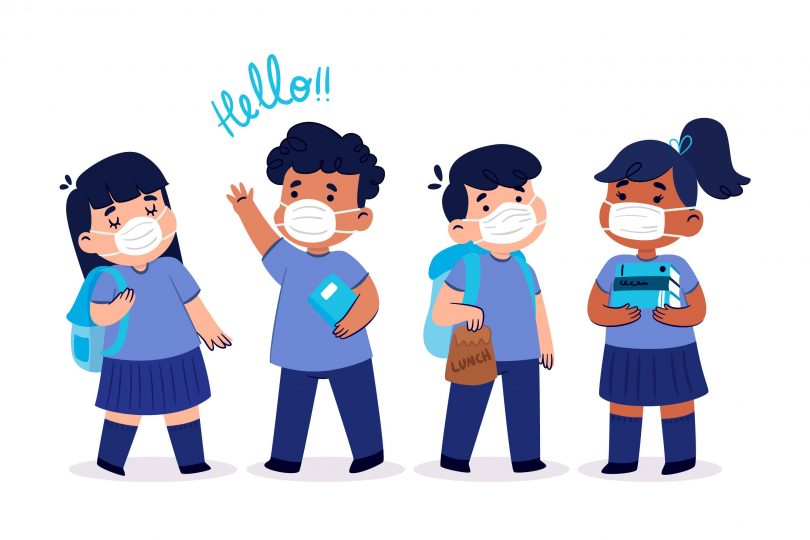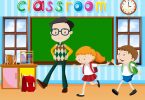What do you do when learners in your class are not motivated to do anything; when they just seem not to care; when, no matter what you or say, they remain indifferent and they fail every assessment? These are questions that confront many teachers in today’s classrooms.
When confronted with the same challenges, teachers in top performing schools turn to cooperative learning for a solution.
What is cooperative learning?
Cooperative learning is defined as instructional use of small groups so that learners work together to maximize their own and each other’s learning. In cooperative learning, learners work together in groups to achieve three main goals, i.e. to:
- contribute to a team
- demonstrate individual responsibility
- share accountability for the outcomes of the group
Benefits of cooperative learning
Cooperative learning can:
- impact academic achievement in a positive way
- increase learners’ self-esteem because learners realise that they are important to a group’s success
- improve their social skills by teaching learners how to communicate or work through conflict situations
- increase higher-level thinking because, as they talk with others in their group, learners hear differing thoughts and opinions
- allow for more learners to be actively involved in a lesson because each learner must contribute in order for his or her group to be successful
Pillars of cooperative learning
In their model of cooperative learning Johnson, Johnson and Smith, experts in cooperative learning, identified five essential elements or pillars of cooperative learning. They are:
- Positive interdependence
- Individual accountability
- Promotive interaction
- Interpersonal skills
- Group processing
The extent to which high-performing schools use cooperative learning is consistent with research- or empirically-tested pillars of cooperative learning. Each pillar is briefly discussed below.
Positive interdependence
Positive interdependence exists when group members realise that they are linked with each other in a way that:
- one cannot succeed unless everyone succeeds
- if one fails, all fail
- they “sink or swim together
- each learner’s efforts benefit not only him- or herself, but all other group members as well
Positive interdependence creates a commitment to other people’s success as well as one’s own and is the heart of cooperative learning.
Teachers use different strategies to encourage learners in their cooperative groups to learn from each other. Amongst other things, they:
- Assign work to be done in cooperative groups
- Give each member of the cooperative group opportunities to teach a skill or a concept they understood better than others to their peers
- Give learners a problem-solving assignment, an investigation or a project to be accomplished by a cooperative group and requiring it to produce a group product, solution or a consensus answer
- Assign the same marks or points for any piece of work completed by each cooperative group
- Assign a task to a cooperative group that must be done sequentially where one group member must first complete his or her task before the next task could be completed by another group member
- Give learners in their cooperative groups past exam papers and require them to answer different questions as a group.
Individual accountability
Individual accountability exists when all group members are held accountable for :
- achieving the goals of the group
- contributing his or her share of the work to ensure that no one “hitch-hikes” on the work of others
Individual accountability also exists when the performance of each individual learner is assessed and the results are given back to the group and the individual in order to ascertain who needs more assistance, support, and encouragement in completing the assignment.
Teachers hold individual learners in a cooperative group accountable for their performance by assessing learners and assigning marks for the whole (i.e. a group average).
Assertions from learners suggest stronger effects of individual accountability exerted by collaborative groups than that exerted by teachers.
Promotive interaction
Promotive interaction occurs when group members help, support, encourage, and praise each other’s efforts to learn. Cooperative learning groups provide the following support systems:
- an academic support system
- a personal support system
There are important cognitive activities and interpersonal dynamics that occur when learners promote each other’s learning.
In top performing schools, promotive interaction is about:
- Teachers encouraging learners to promote each other’s learning
- Learners working together and promote each other’s success by helping, supporting, encouraging, and applauding each other’s efforts to learn and achieve.
Interpersonal skills
Learners are required to learn not only academic subject matter (taskwork) but they are also required to learn the interpersonal and small group skills required to function as part of a group (teamwork). Group members must develop different skills, including leadership, trust-building, conflict-management, decision-making and communication.
Teachers in top performing schools:
- Build learner ownership by promoting self-efficacy and scaffold learning of both academic and social behaviours to guide learners in assuming ownership and responsibility for their own learning
- Teach teamwork skills and conflict management just as purposefully and precisely as they do academic skills.
Group processing
Group processing exists when group members discuss how well they are achieving their goals and maintaining effective working relationships. Two most important features of group processing are:
- Groups examine members’ actions to identify those that are helpful and those that are not and make decisions about what behaviours to maintain or change.
- Continuous improvement of the process of learning results from the careful analysis of how members are working together.
To assess how effectively learner groupings are functioning, achieving their goals and maintaining effective working, teachers in top-performing schools:
- Use the analysis of continuous assessment (formal or informal) to evaluate how well individual learners in a cooperative group perform and whether a cooperative group has achieved its goals.
- Check randomly, e.g. randomly calling on specific learners to give an explanation after talking about the question or problem in a group.
- Ask individual learners to demonstrate a skill (e.g., to demonstrate competency with specific experimental skills in a laboratory) that a cooperative group was assigned to practise.
How to set-up cooperative groups
- Nature of groupings: Most top performing schools prefer heterogeneous groups than homogeneous groups because they strongly believe that different learners have more to learn from each other.
- Size of groupings: Cooperative groups are especially effective in teams of four to five members.
- Ground rules that guide group members. Following are six simple rules that guide cooperative group members:
Share: Help each other
Contribute: Encourage each other
Stay on task: Give & accept feedback
PEER-TUTORING SYSTEM
Most schools that use work peer-tutoring system (also called “kids teaching kids”) instead of cooperative leaning. The two approaches, while complementary, are not synonymous. Where in cooperative leaning the focus is on learners working together in small groups to maximize their own and each other’s learning, in peer-tutoring system, a mentor (an academically strong learner) helps a mentee (a weaker learner).
Forms of mentor-mentee relationships
Different schools that work use one or more forms of peer-tutoring systems. These include the following:
- Older learner-younger learner peer support (cross age/grade support): An older learner, for example, in a senior grade (often Grade 12) mentors a younger learner or a group of learners in the lower grades (Grade 8 to 11) in a structured environment sanctioned by teachers.
- Academically stronger learner-weaker learner peer support (heterogeneous peer support). “The brighter learner sits with a group of weaker learners and helps them.”
- Academically strong learner-academically strong learner peer support (homogeneous peer support): High-performing learners work together cooperatively for mutual benefit.
How to set-up a peer-tutoring system
When setting up peer tutoring systems, top performing schools:
- Define roles and responsibilities of mentors and mentees
- Train peer-mentors to decrease the likelihood of mentors engaging in negative behaviour or causing harm to mentees, whether intentionally or not
- Recruit mentors from learner populations within the schools with good academic achievement and/or former learners (alumni)
- Recruit mentees, i.e., low-performing or struggling learners and progressed learners
- Match mentors and mentees by assigning high-performing learners to struggling learners







